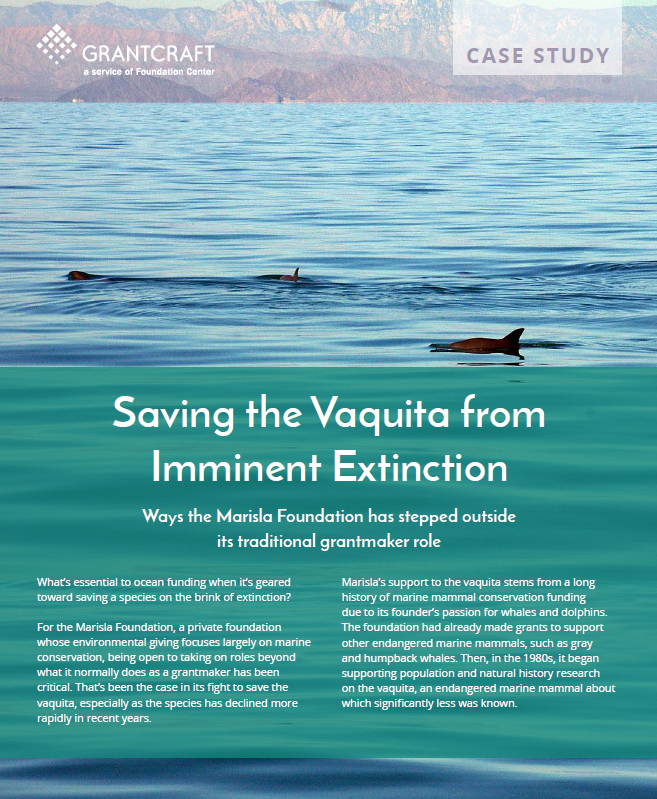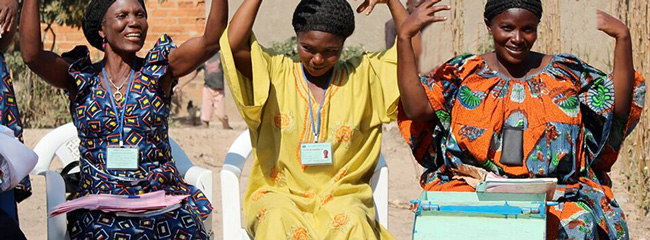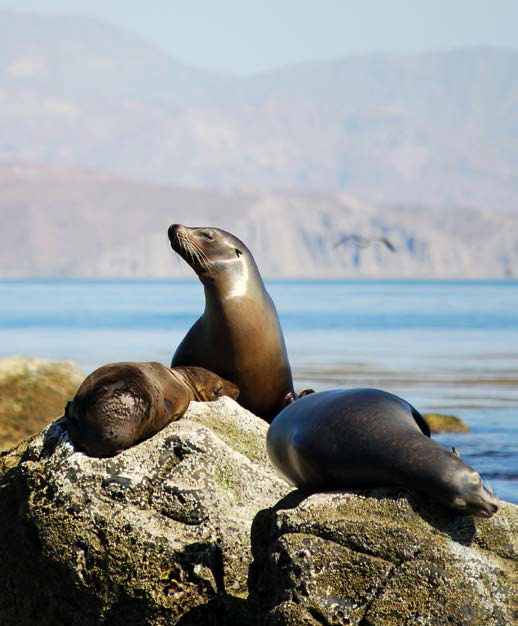Saving the Vaquita from Imminent Extinction Ways the Marisla Foundation has stepped outside its traditional grantmaker role
What’s essential to ocean funding when it’s geared toward saving a species on the brink of extinction?
For the Marisla Foundation, a private foundation whose environmental giving focuses largely on marine conservation, being open to taking on roles beyond what it normally does as a grantmaker has been critical. That’s been the case in its fight to save the vaquita, especially as the species has declined more rapidly in recent years.
Marisla’s support to the vaquita stems from a long history of marine mammal conservation funding due to its founder’s passion for whales and dolphins. The foundation had already made grants to support other endangered marine mammals, such as gray and humpback whales. Then, in the 1980s, it began supporting population and natural history research on the vaquita, an endangered marine mammal about which significantly less was known.
When Marisla’s vaquita funding began, only about 300 vaquita remained. As research progressed, scientists noticed a decline in vaquita numbers, which appeared related to a fishery bycatch issue. “The shrimp fishery in the Upper Gulf was capturing vaquita in drift nets, which are like underwater curtains that are sometimes kilometers long,” says Sara Lowell, marine program director at the Marisla Foundation. “Because vaquita, like other marine mammals, echolocate using sound waves to locate objects underwater, they can’t see these nets, so they swim into them and drown.”
Eight years ago, as the species decline accelerated, Marisla realized it needed to add a new dimension to its grantmaker role: that of advocate. “We decided it was time to step out of our role of just making grants and become more active and directive in what we wanted to happen.” The foundation joined forces with the David and Lucile Packard Foundation and the Walton Family Foundation to make an appeal to the Mexican government. Together, representatives from each of these foundations traveled to Mexico City and met with Mexico’s environment minister. “Our message was, we’re providing resources that can complement your efforts to save the vaquita from extinction,” says Sara. “We hoped our commitment would help cement the government’s commitment.”
Approaching the Mexican government in this way was a major role change for Marisla. “We try not to stick our nose into things,” says Sara. “But we realized if we could apply our influence to the right lever of change, then it would bring value, especially with the vaquita’s extinction so imminent.”
After Marisla communicated its funding intentions with the Mexican government at this meeting, government’s enforcement of legal fishing practices increased for a few years. To maintain attention on the slowing of the decline of the species, Marisla kept playing a more traditional grantmaker role, funding NGOs, including the World Wildlife Fund (WWF) of Mexico, one of WWF’s offices and associate organizations in more than 40 countries around the world that work together to halt and reverse the destruction of our natural environment. That helped complement and counterbalance government efforts. For example: “Marisla funding allowed us to work closely with fishers to promote the use of alternative gear,” says Enrique Sanjurjo, development coordinator for WWF Mexico. “It fostered additional collaborations with academics, the private sector, and government to advance and test new fishing technologies. All in all, it helped us advocate with government to ensure transparent and active attention to vaquita conservation.”
.jpg) Several years into those grants, Marisla added another new dimension to its funder role: that of a financial capacity builder to the NGOs it funds. For the World Wildlife Fund of Mexico, Marisla’s approach has significantly leveraged additional dollars to work on the vaquita issue in the region. What differed was how Marisla did it. “The foundation provided flexible operational funding, which allowed WWF Mexico to dedicate staff time and covered our travel and communications costs to secure matching funds.” The way in which funding flowed from Marisla also made a difference. “Marisla let us raise the match during our grant funded period, so it triggered matches from other sources that required up front matching funds.” The ultimate impact: “Marisla gave WWF Mexico $2 million over the last seven years, and we used that to raise a total of $5 million,” says Enrique. “We haven’t been able to raise that level of matching funds with other donors.”
Several years into those grants, Marisla added another new dimension to its funder role: that of a financial capacity builder to the NGOs it funds. For the World Wildlife Fund of Mexico, Marisla’s approach has significantly leveraged additional dollars to work on the vaquita issue in the region. What differed was how Marisla did it. “The foundation provided flexible operational funding, which allowed WWF Mexico to dedicate staff time and covered our travel and communications costs to secure matching funds.” The way in which funding flowed from Marisla also made a difference. “Marisla let us raise the match during our grant funded period, so it triggered matches from other sources that required up front matching funds.” The ultimate impact: “Marisla gave WWF Mexico $2 million over the last seven years, and we used that to raise a total of $5 million,” says Enrique. “We haven’t been able to raise that level of matching funds with other donors.”
A new threat to the vaquita’s existence has recently emerged. The vaquita’s decline has become intertwined with the illegal trafficking of totoaba, a fish that also exists in the same place as the vaquita and nowhere else in the world. “There are illegal fishers catching totoaba and drying and transporting their swim bladders to China for medicinal uses,” says Sara. “The vaquita are getting caught in these nets. This has bumped their decline to an extreme.”
With these new circumstances, and the vaquita now even closer to extinction, Marisla decided it was once again time to take on a different role: that of collaboration facilitator. In July 2016, Marisla, together with the Packard Foundation, brought together their grantees working on the vaquita issue in the U.S., Mexico, and China. Four working groups emerged from the meeting. “Grantees identified markets, enforcement, policy, and alternative gear as priorities, and then self-selected which group they thought they needed to be in,” says Sara. The NGOs then dug into the working group topics. “They spent more than half of the meeting mapping out a framework for change.” Participating NGOs identified additional organizations who hadn’t attended the meeting that should join. Some participating NGOs also decided to join multiple groups. Since the meeting, the grantees have engaged in monthly working group calls facilitated by Blue Earth Consultants, an environmental firm that Marisla and Packard brought on to support the work.
While the foundations have provided administrative support, they’ve been intentionally hands off in shaping the working group agendas. “If, for example, the working group on enforcement wants the consultant to do research on a certain topic, or needs help to coordinate a meeting, we’re open to providing resources for that,” says Sara. “In my eyes, if they think something is important, it’s fine to use the consultant resource as they see fit.” The one caveat: requests must be clearly beneficial to the whole or a majority of that working group. “One organization can’t say, ‘We’re trying to write this funding proposal. Can Blue Earth do some research or write a section of it?’ That isn’t part of the deal.”
To support ongoing working group engagement, Marisla and the Packard Foundation have set up a secure site for members to share documents. The foundations also host monthly reporter calls. “There is one reporter from each group that gets together with the funders to share what’s going on,” says Sara. “These calls are also opportunities for the working groups to discuss inter-linkages between the work that they’re doing. For example, if the markets group is promoting a sustainable shrimp fishery and the policy group is trying to create restrictions on that particular fishery, then they need to be aware of what each group is doing.” This allows for better coordination across the groups, and makes sure funders also stay in the loop on what’s happening.
Marisla remains very clear that its role with the working groups is more deferential than directive. “In order for a collaborative effort like this to work it cannot be directed by the funder,” says Sara. “We can bring people together and provide support, but groups need to define how the collaboration is going to look. They need to be invested in it. They’re more entrenched in the topic and they know what they need.” What may help bolster grantee engagement in the working groups is their relationships with the foundations. “Marisla has long-term relationships with our grantees and we’ve been supporting groups for more than 25 years,” says Sara. “But we can help encourage collaboration. Let’s face it, for better or for worse, grantees want to show up for their funders.”
Marisla’s role may yet again shift as it balances short and long-term goals in its fight to save the vaquita. “It’s like we’re working on two time scales,” says Sara. “We have this year-to-year, ‘Let’s just make sure no other vaquita are caught in nets’ goal. To accomplish that we’re supporting NGOs working on the water together with the Mexican government and the Navy to try and ensure enforcement of legal fishing and the removal of nets.” Then there are international trade issues to consider. “Once totoaba bladders are dried they’re basically trafficked through the United States, on their way to China,” says Sara. “We need to figure out a way to stop this trade immediately.” That means as a funder Marisla’s looking at a strategy that has to be really broad; maybe even making grants in China which is not one of its areas of geographic focus. While going broad internationally, Marisla’s also considering how to go deep locally. “There’s the issue of the border communities of San Felipe and Golfo de Santa Clara that participate in the legal and illegal fishing and wildlife trafficking,” says Sara. “They currently have high levels of poverty, drug trafficking, and drug use. The long-term goal is to figure out how we can help turn them into vibrant, strong, and thoughtful communities that can resist the temptation of participating in these illegal activities that are contributing to the death and the imminent extinction of the vaquita.”
This way of thinking is relatively unique in the environmental donor community. And it may yet call upon the foundation to play an additional role that it’s not quite sure how to define. “You need to have plans for how to turn over these communities,” says Sara. “It’s ensuring the kids are growing up and are educated. It’s making sure that there’s healthcare available and drug treatment. It’s outside of our foundation’s priority areas and it’s not necessarily our role to come up with this strategy, but there hasn’t been anybody doing it. We know it needs to be done, but we haven’t yet figured out what we’ll do to address it.”
Ultimately, playing the role of collaboration facilitator may represent Marisla’s best chance at turning around these communities and preserving the vaquita long-term. According to Sara, the wheels may already be in motion. “If, for example, the alternative gear group can get local fishermen to test new gear and expand its use in the Upper Gulf region. And the markets group can strengthen channels between fisheries in the region and buyers in the U.S. with assurances that purchased shrimp have been caught in a way that has limited impact on the environment as a whole, and a zero impact on vaquita. And the policy group can influence stronger long-term policies that support conservation. If these groups can work successfully together and become a strong network, achieving interconnected outcomes like these, then it’s possible to strategically address social, political, and economic issues in the region as well as international trade that threatens the vaquita.”
While the vaquita’s fate remains in flux, one thing is certain from Marisla’s example: playing multiple roles allows a funder to come at an issue from different angles, which can be critical when facing complex circumstances and high stakes. Let’s hope for the vaquita it can make the difference.
This case study was developed as a companion piece to stories shared through Foundation Center’s Funding the Ocean project. Funding the Ocean is a dynamic hub to inform and inspire ocean conservation philanthropy around the world. It includes a mapping application, repository of reports and case studies, and a cloud-based platform for engagement.





